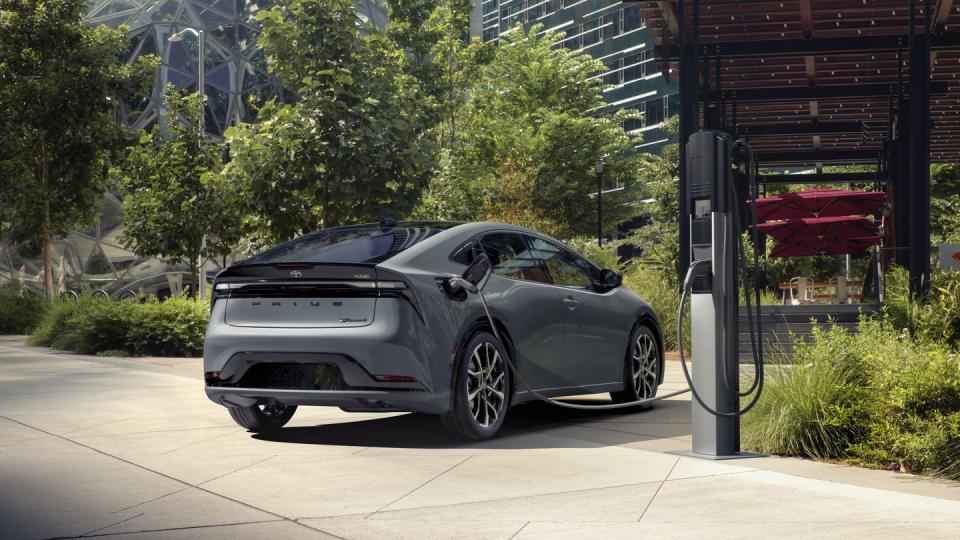What Happens If You Never Charge Your Plug-In-Hybrid Car?

After 25 years on the market, most people know what a hybrid car is—even if the only one they can name is the Toyota Prius. And battery-electric vehicles are simple: plug in them to charge the battery, and it will power the car for a few hundred miles.
But what happens if a plug-in hybrid doesn't get plugged in? TL, DR: Nothing.
More specifically, it continues to operate just like a regular hybrid. Its larger battery makes it heavier than a comparable hybrid, but it may also offer a bit more electric assistance and quicker acceleration as a tradeoff.
Hybrid? EV? Both? Neither?
But plug-in hybrids can be confusing for shoppers. Are they regular hybrids? Are they electric cars? Well, both and neither. Which all but guarantees that many car shoppers, let alone salespeople, don't really understand them—and sometimes don't know what they've bought.
The basic principle is that, when plugged in to charge its battery, a plug-in-hybrid electric vehicle (PHEV) can operate as an EV for 20 to 50 miles—which is often enough to cover your daily driving. (The average U.S. driver covers about 30 miles a day.) But it also has an engine and gas tank that provide a few hundred miles of additional range after the electric-only miles are used up. That makes them also excel on extended road trips, where you can just keep filling the gas tank and not worry about stopping for the lengthy recharging stops that EVs require.
A PHEV battery has a much lower capacity than that of a battery-electric vehicle—on average, about one-sixth the energy of an EV's battery—meaning the battery is less expensive to build. Its lesser energy also means a PHEV is fairly fast to recharge, often as few as two or three hours from a 240-volt (Level 2) charging station. Even plugged into a 120-volt household wall outlet, many PHEVs can recharge overnight.
Many plug-in hybrids are adapted from regular hybrids without a plug. One example: the 2024 Toyota Prius is a conventional hybrid, but the Prius Prime (which looks all but identical and is pictured at top) is a plug-in hybrid with up to 44 miles of EPA-rated electric range.
No Plugging In, No Problem?
Unlike battery-electric cars, PHEVs don't have to be plugged in to run. If the PHEV battery is "depleted," or has discharged its all-electric range, a portion of its capacity stays in reserve to act as a regular hybrid battery. That means the vehicle will recharge it via regenerative braking or by siphoning power from the engine. Even in this mode, some PHEVs (not all) can let their batteries charge to a higher capacity than the limited energy in the conventional hybrid. For example, they may regain one to four miles of pure electric range while descending a long, steep grade.

 Yahoo Autos
Yahoo Autos 